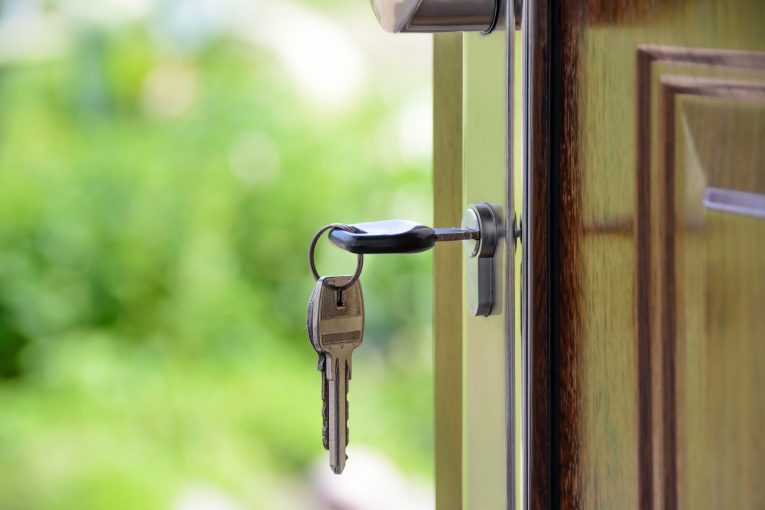

By Chujun Tang
SACRAMENTO, CA – Last Thursday, Governor Gavin Newsom announced more than 923 million dollars in awards for affordable housing across California as part of the California Housing Accelerator program, to rescue construction suspended for shortage in funds.
The new funding is a continuation of the state’s investments in housing. Last year’s California Comeback Plan invested an unprecedented 22 billion dollars to tackle the housing affordability crisis in California, with 10.3 billion dollars to build more affordable housing and 12 billion dollars allocated for homelessness and behavioral health services.
Now the housing project has received more financial support and will take effect soon. With 1.75 billion dollars invested in the Housing Accelerator, 27 statewide projects have been approved to date. The projects were estimated to create 2,300 housing units, 500 of which are kept for the homeless.
Gustavo Velasquez, Director of the California Department of Housing and Community Development (HCD), pointed out the biggest bottleneck preventing California from building more affordable housing, saying “when we launched the California Housing Accelerator, we had clear objectives – eliminate the backlog of projects standing in long lines for tax credits and bonds, bring affordable housing to communities in need, and reduce the amount of time and money involved in preparing to make these homes available.”
Fortunately, HCD is finalizing the project solicitation for the next round of the California accelerator, which will be released in mid-February. For the next phase of projects, an additional 735 million dollars will be available.
A quartet of San Francisco affordable housing development projects received a total of 200 million dollars from the new state housing accelerator fund. The money from the fund will finance construction projects in Potrero Hill, Treasure Island, Market Street and the Tenderloin.
All four projects are fully approved and expected to begin this year, according to San Francisco Mayor London Breed. “These funds come at a critical time in San Francisco,” said Mayor Breed. “They will help us continue to deliver desperately needed affordable housing units for our families, workers and individuals exiting homelessness.”
The California Housing Accelerator is still facing significant headwinds, however. The most well-known case is the “mountain lion sanctuary” Woodside on the San Francisco Peninsula. The wealthy suburb exempted itself from the state law allowing more housing by declaring the entire town mountain lion habitat.
Woodside skirted the law under the guise of environmental issues. Environmentalists have expressed their misgivings about the feasibility of the state’s proposed housing projects, citing increasingly harsh climates during wildfire season.
Long term opponents of large-scale construction are seeking support in courts. Last month, a judge in Northern California forced a pause on the Guenoc Valley project, which was to be built atop 16,000 acres of open ranch land, oak woodlands and untouched savannah near Calistoga.
“Local governments and developers have a responsibility to take a hard look at projects that exacerbate wildfire risk and endanger our communities,” Rob Bonta, California’s current attorney general, said after the Guenoc Valley ruling. “We must build responsibly.”






So in this particular case at least, California’s attorney general is one of the “long term opponents of large-scale construction”.
I posted a comment regarding this action, a few weeks ago.
So while the attorney general (successfully) threatened Woodside, he did initiate a far-more important/valuable action.
Too bad that the state didn’t do anything about this, not to mention other inconsistencies regarding the state’s efforts:
California developers want to build a city in the wildlands. It could all go up in flames (yahoo.com)
But if I had to guess, the state is ultimately (one way or another) not going to be successful in forcing (truly) wealth communities to accept a lot more infill. With the possible exception of large cities, such as San Francisco.
Pretty tough to do, when the entire population of the state is (also) not increasing. With folks fleeing high-priced areas in the first place, along with the companies they work for. And for the most part, the state will continue to do next-to-nothing to reign in resulting sprawl.
Ultimately, the problem results from depending upon the market to provide “affordable” housing, in a competitive market-based economy. That’s why people are getting priced-out of places like Austin and Nashville, as well. (It’s happening everywhere.)
Massive government cash infusion into the housing market.
What could possibly go wrong?
And somebody . . . please . . . suspend the law of unintended consequences!
We really don’t have a homelessness problem in California, we have a drug addiction problem.
False
True!
(next!)
According to a recent study, California is below the national average in terms of drug abuse rate and yet California has by far the highest homeless rate in the nation.
BOTH! (drug problem. housing issue)
Now as to the article? I suppose throwing a bunch of money at the problem is a start. But it’s sort of like taking a shotgun to a target shooting match. It’s inefficient. I’d prefer a more structured program in which local municipalities created local affordable housing development entities (hired all the contractors directly…etc…) to build specific community projects. Often these funds tend to be distributed haphazardly and many affordable housing developers are for profit companies. Not that for profit affordable housing builders are a major problem. They do build affordable homes. But they build them only in places where they can make the most money….not necessarily where it’s most needed. So while I think these kinds of funds are a step in the right direction. I’m skeptical when it’s just essentially cutting a check to someone that checks off the right conditional boxes to get the money.
Pesky environmentalists! Always putting the environment before people in need.